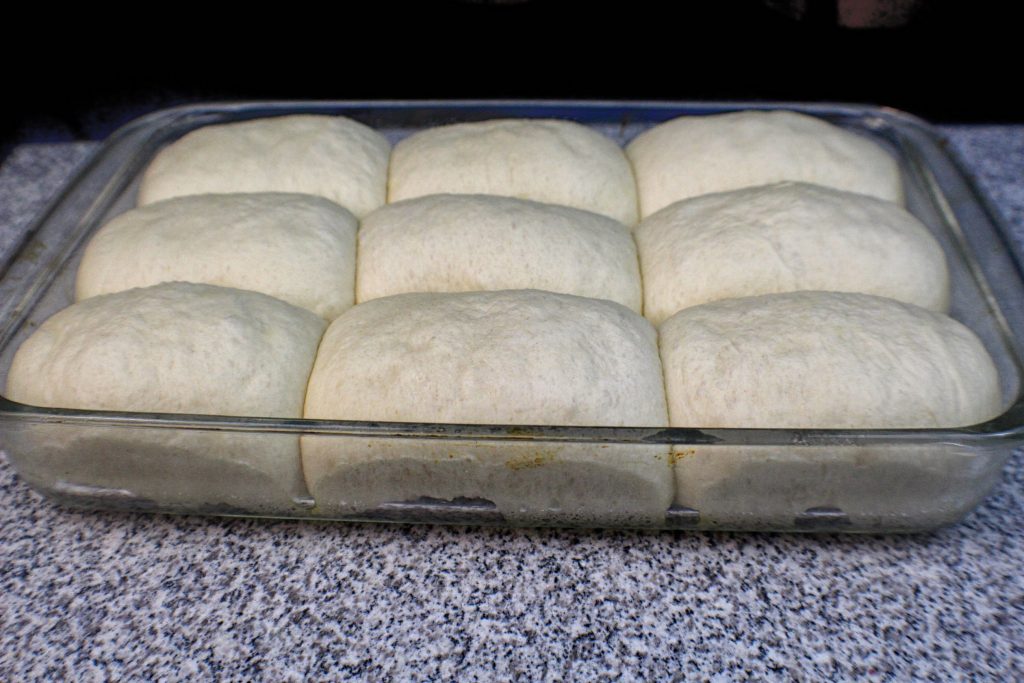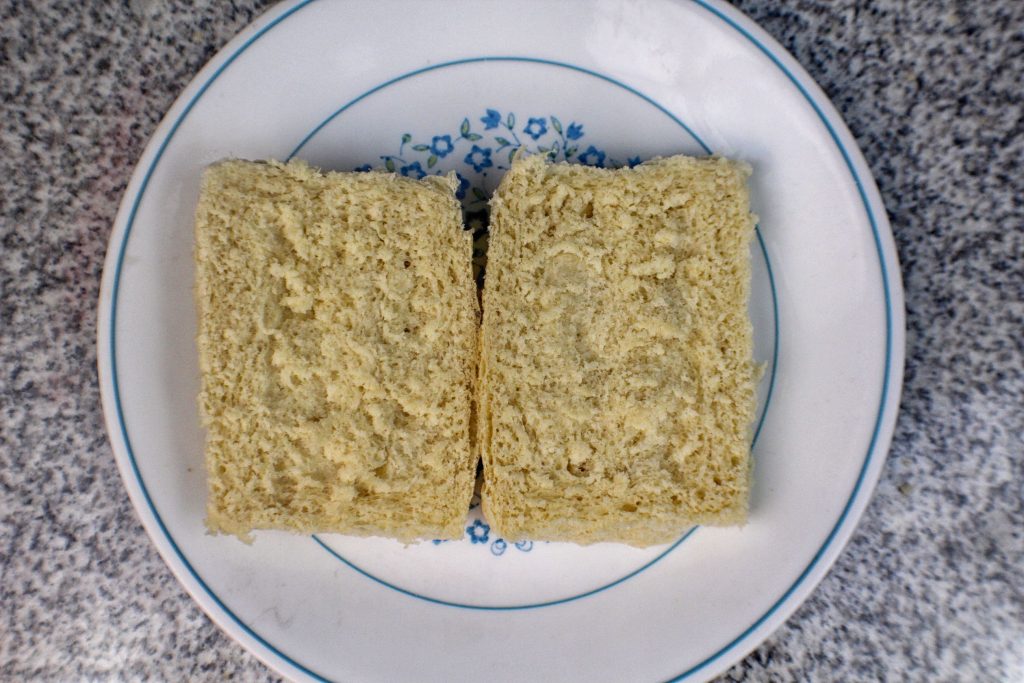The Argentine Pebete
According to Wikipedia, a pebete is “an Argentine soft oval bun made of wheat flour with a thin brown crust, rather like a fatter hot dog roll.” I would say that it is more like an elongated dinner roll. I am no expert, but after making and trying these sandwiches, and reflecting on the food traditions of my own family, I think I understand what place this sandwich has in Argentine life. It is a simple sandwich, but often the simplest things can be the most profound.
In Argentina, the word pebete means little boy, and the rolls and sandwiches called pebete also seem to be associated with childhood. Soft slightly sweet rolls are cut open and filled with ham or salami, cheese, tomato slices and mayonnaise. They are simple to make, and while I suspect that Argentinean youths must have a higher tolerance for tomatoes in their sandwiches than my kids do, these are unchallenging comfort snacks, ubiquitous in one’s youth, becoming an indelible part of one’s life when grown.
Though I am not fluent in Spanish, the patterns of a cooking show are somewhat universal, and Argentine cooking show Cocineros Argentinos has many of their episodes available via YouTube and their website. Luckily for me, this includes the show in which they made pan pebete. They provide a recipe and detailed instructions on the website as well, and Google provides a helpful but flawed translation.
Part 1 of the pebete show is here; part 2 is here. It’s fun to watch, if not for the wacky interactions of the hosts, then for the mystery of how he hands a pan with 8 rolls to an assistant, gets handed back a pan with 6 rolls, does some more prep work, hands them the 6 rolls and receives a pan with 9 rolls. I did find the detailed shaping demonstration very helpful though. The ingredients are all measured by weight, and total 895 grams. Each roll is supposed to contain about 100 grams of dough. Therefore, when I made mine, I made nine rolls in a batch.
After baking at 355°F for 20 minutes, the rolls are removed from the oven, painted with a cornstarch slurry, and returned to the oven for another minute. As far as I can tell, this is simply to give them a glossy appearance. My rolls did not get as nicely browned as the other versions I’ve seen online, but they still looked nice.
- Pebete rolls
- Pebete rolls
- Pebete rolls
They tasted great as well. The rolls called for quite a bit of yeast–I’m fairly sure that I should have used less, as I was using dried yeast and the recipe called for fresh. However, the addition of milk powder kept the rolls from developing large air holes, instead giving them a soft and consistent crumb. There is a light crust but the rolls are not hard, again, very much like a dinner roll.
After baking the bread, making the sandwiches is almost anticlimactic, it’s so simple. Many of the pebete photos I’ve seen online have shown lettuce in the sandwich as well, but I stuck with the basic recipe I found in Wikipedia: cured meat (i.e., ham or salami) with tomato and mayonnaise. Though I did find enough descriptions of the sandwich calling for cheese that I relented and added cheese as well. Based on what I’ve read about Argentine cheeses, they appear to have derived mainly from Italian cheeses, so I chose a mild provolone for these sandwiches.
- Pebete with ham and provolone
- Pebete with ham and provolone
- Pebete with ham and provolone
Mayonnaise and tomato is not normally what I’d use in a ham sandwich–I’m more of a mustard and pickles guy–but I’ll be honest, mayo and tomato is a combination that works in just about any savory sandwich. These rolls are well suited for it, being squishy enough to mold themselves to the sandwich contents but strong enough not to become inundated with juices and fall apart.
- Pebete with salami and provolone
- Pebete with salami and provolone
- Pebete with salami and provolone
Genoa salami was not quite as successful–it’s a stronger-flavored meat, so the tendency is to use less of it, but that throws off the balance of the sandwich. However, if you use too much of it, the meat layer becomes difficult to bite through.
Ian, my youngest, isn’t much of a tomato guy, but his favorite sandwich–the “Ian Special” or “salami (pronounced slammy) sammy”–consists of ham and salami with mayonnaise on soft bread. This roll was perfect for his purposes, and my batch of 9 went quickly. Though I did have the opportunity to try the last roll the next morning for breakfast, with bacon, egg, and HP sauce. It was perfect.
As I think about these sandwiches, I am flooded with a sense of nostalgia for the road trips my wife and I took with our young family years ago. She brought along a tradition from her family of buying dinner rolls from the grocery store, cutting them open while on the road, and filling them with ham and cheese, mayonnaise or mustard. I would be driving and Mindy would be in the passenger seat with a bag of ingredients in her lap. Each of us in turn would ask for a sandwich and she would assemble it, passing it to its recipient wrapped in a paper towel. When I asked for one, she would lay a paper towel across my right thigh and carefully balance a sandwich atop it for me. It was cheaper than going through drive-thrus, for sure, but more than that, it was a very simple and loving gesture that bonded our family on these trips.
So I get it, Argentina. I understand the love you have for this sandwich. It is the love of family, of childhood and comfort and good things to eat. It’s the love that makes the past look shinier than it was. Nostalgia can be a powerful seasoning for a sandwich. The nicest thing about a sandwich like that is that it lets us carry a little bit of that past with us to brighten the now.

I like sandwiches.
I like a lot of other things too but sandwiches are pretty great

















Recent Comments